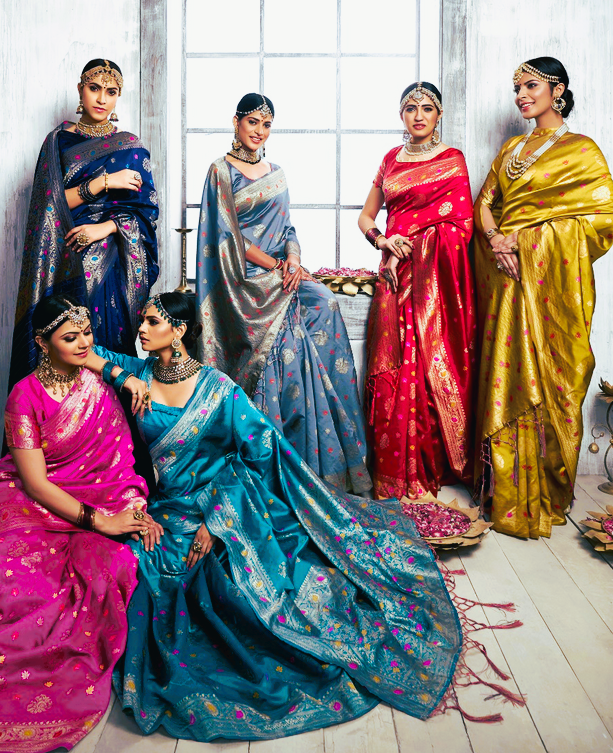The Tamil word for silk is ‘Pattu’. Glossy Pattu sarees made of pure mulberry silk are the epitome of luxury and elegance among Indian women. Most people have a special place in their hearts and minds for the gracefully glistening, smooth, and luxurious silk fabric. We are so mesmerised and in awe of this lovely fabric that we unconsciously associate silk with prosperity and sophistication. These top 30 types of Pattu sarees will make you fall in love with them.
Contents
- Kanjeevaram Pattu Sarees
- Banarasi Pattu Sarees
- Tussar Pattu Sarees
- Mysore Pattu Sarees
- Bhagalpuri Pattu Sarees
- Bomkai Pattu Sarees
- Baluchari Pattu Sarees
- Konrad Pattu Sarees
- Chanderi Pattu Sarees
- Paithani Pattu Sarees
- Bandhani Pattu Sarees
- Sambalpuri Pattu Sarees
- Art Pattu Sarees
- Thanchoi Pattu Sarees
- Raw Pattu Sarees
- Cotton Pattu Sarees
- Muga Pattu Sarees
- Paat Pattu Saree
- Banglori Pattu Sarees
- Dharmavaram Pattu Sarees
- Gadwal Pattu Sarees
- Kota Pattu Sarees
- Korial Pattu Sarees
- Narayan Peth Pattu Sarees
- Patola Pattu Sarees
- Pochampally Pattu Sarees
- Sournachuri Pattu Sarees
- Tanchoi Pattu Sarees
- Uppada Pattu Sarees
- Dupion Pattu Saree
- Final talk
Kanjeevaram Pattu Sarees
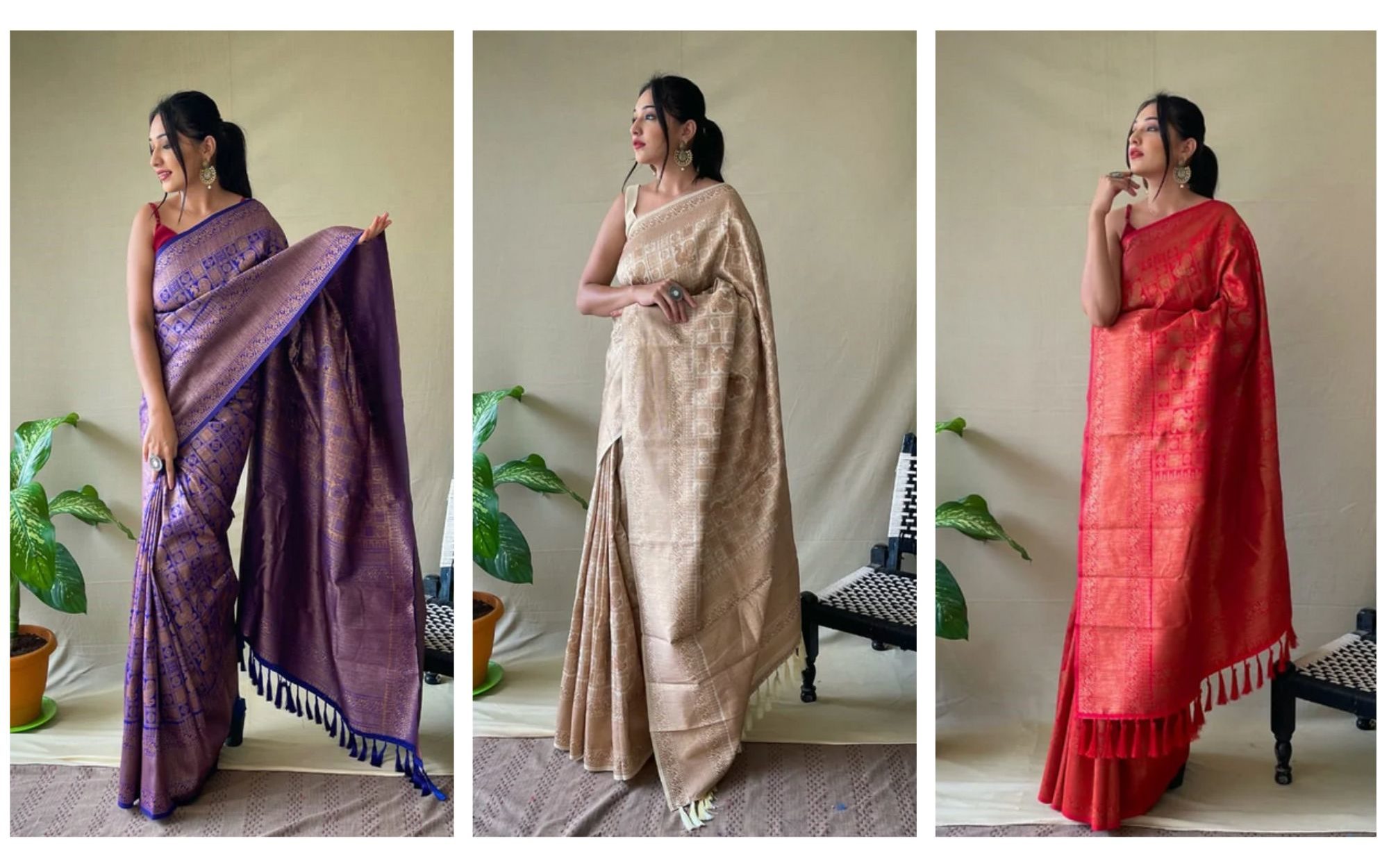
The weaving technique known as “Kanjeevaram” originated in Kanchipuram, Tamil Nadu. Kanchipuram, a town in Tamil Nadu, India, not far from Chennai, is well known for its distinctive weaving culture. Kanjivaram is thought to be a fabric made from lotus flowers that the sage Markanda wove for the gods. This saree was made by skilled artisans using only pure silk threads. Everyone is drawn to the traditional Kanchi silk saree feels in their hands, especially its texture and fabric.
Banarasi Pattu Sarees
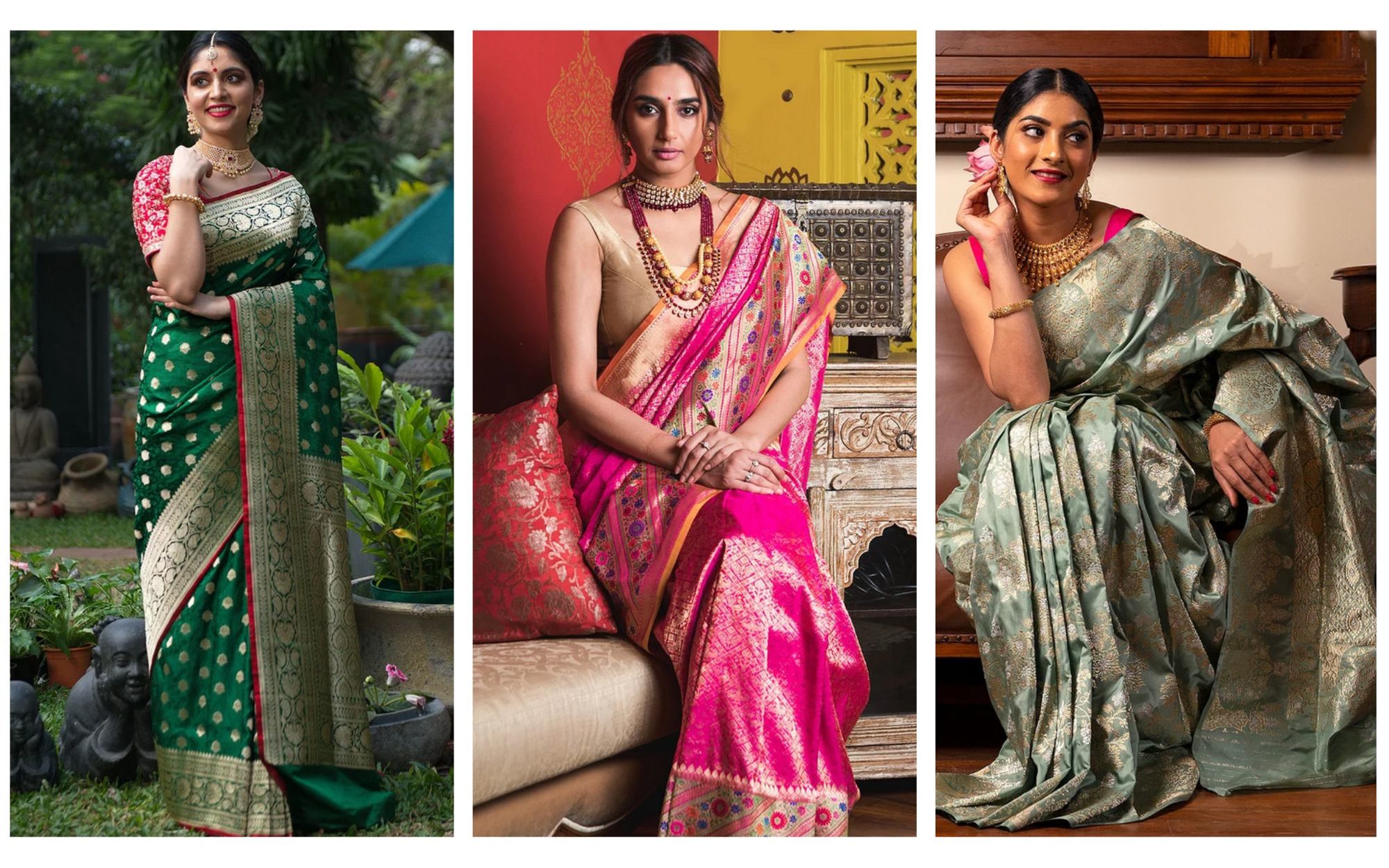
Banarsi sari is a pre-handloom crafted with golden or zari over it. It takes 2 days to 60 days to prepare a single banarasi art over it. The weaving of a Banarasi saree is intricate and intense. At least three people are required to realize the weaving process. An expert artist should be there to focus on the weaving of the silk yarn, one to dye it and another craftsman to bundle the prepared thread.
Tussar Pattu Sarees
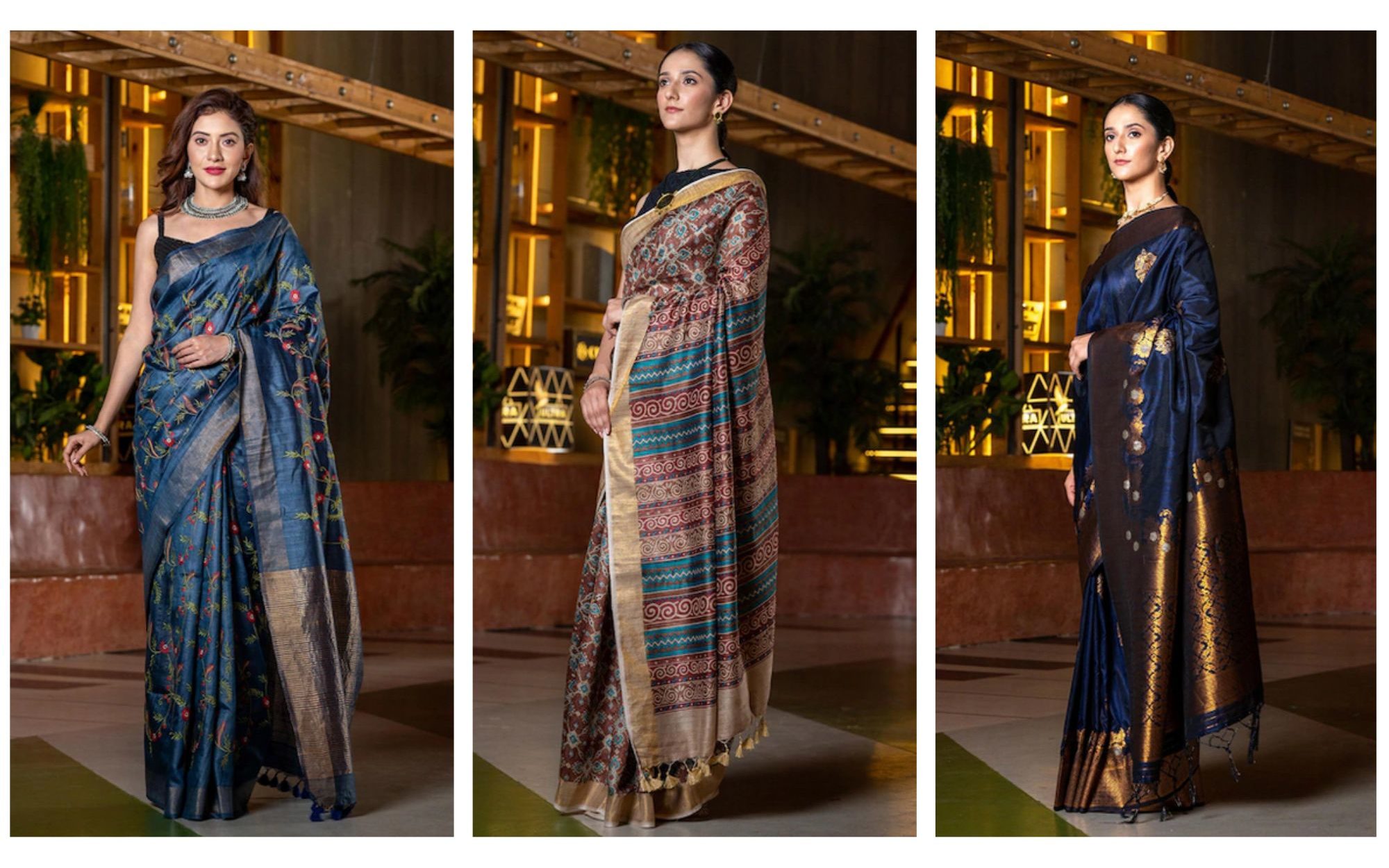
Tussar silk sarees are crafted marvels that give you a contemporary, ethnic look—carefully made from tough tussar fabric. The exterior brilliance of this fabric is complemented by its soft, breathable interior warmth. Therefore, staying in your comfort zone during lengthy gatherings is best.
Also, Types of glass organza sarees you must check out
Mysore Pattu Sarees
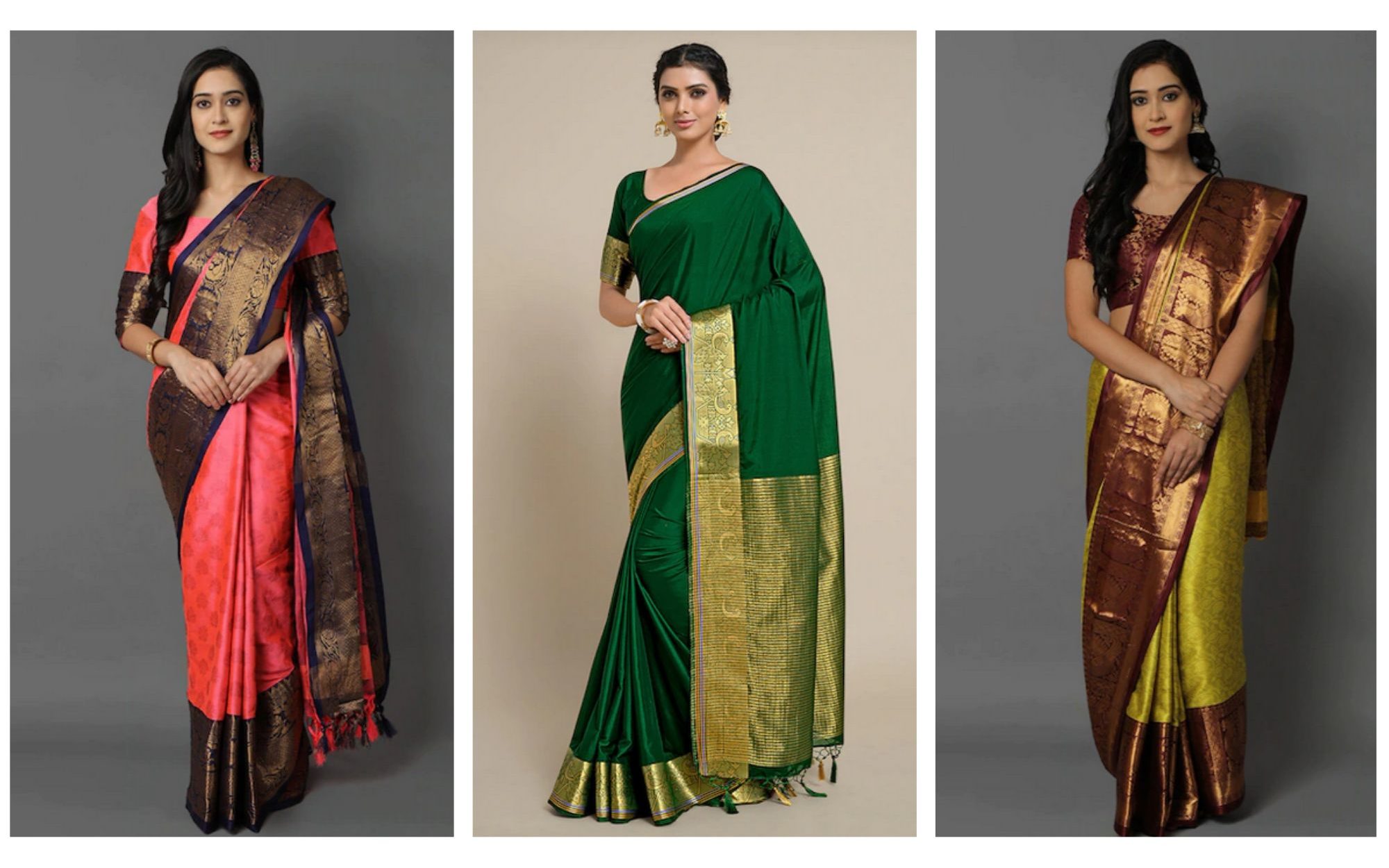
Karnataka’s Mysore district, one of India’s largest mulberry silk producers, is where most Mysore Silk is produced. These Mysore silk sarees are made from a combination of fine silk and real gold zari. Mysore silk sarees have a prestigious history due to their association with South Indian royal history and are highly sought after for their rich quality and shine. The silk is a favourite among Indian brides due to its royal appearance and silky texture.
Bhagalpuri Pattu Sarees

One of India’s most exquisite and expensive fabrics is Bhagalpuri silk sarees. They are created by weaving together a combination of silk, cotton, and occasionally gold or silver threads. In north India, events like weddings and parties frequently feature this fabric. These silks are simple and have an elemental, simplistic charm that makes them appear elegant and simple. The designs woven or printed on bhagalpuri silks capture the beauty and artistic achievement that was praised during the Moghul era.
Bomkai Pattu Sarees
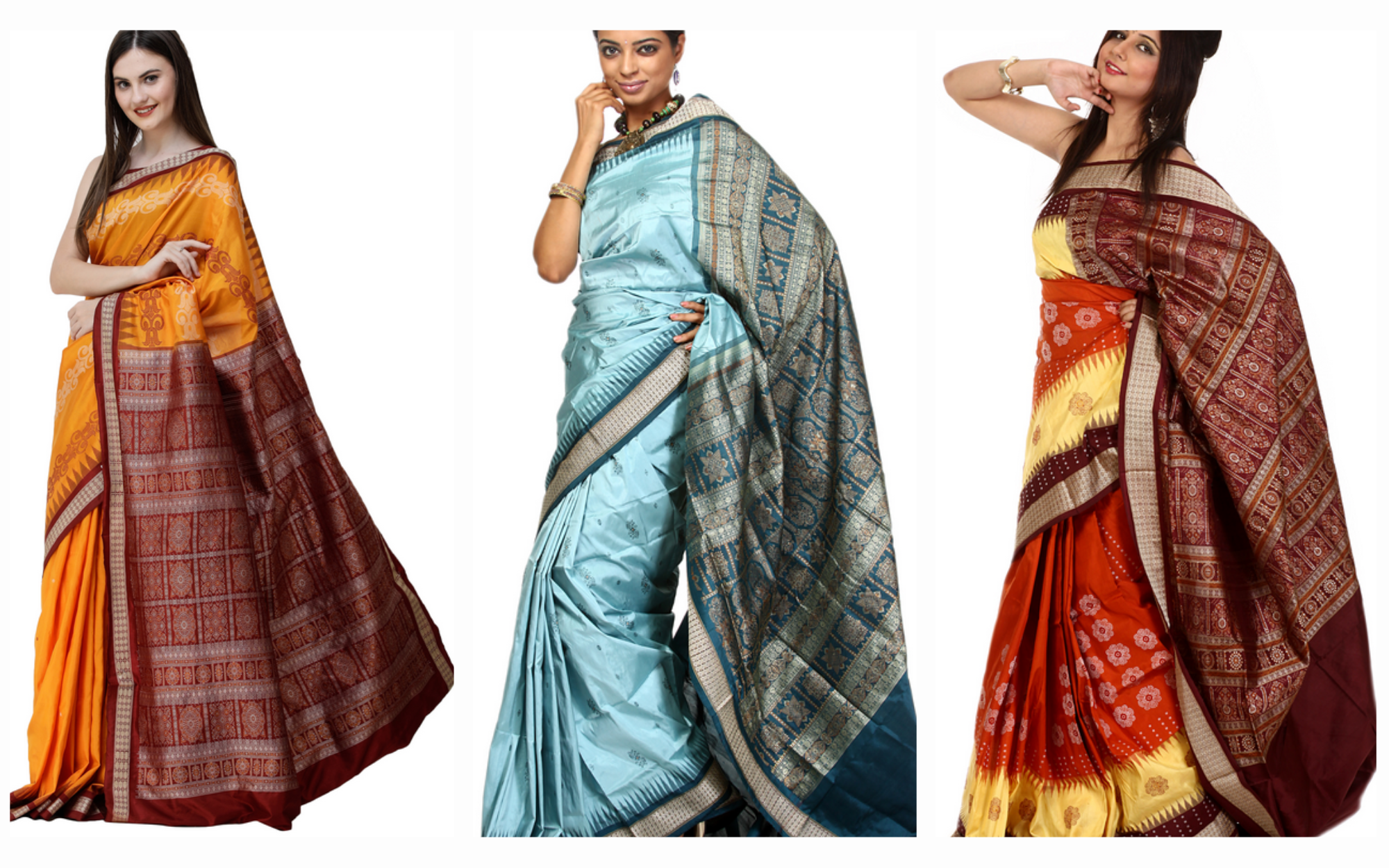
The Bomkai Saree is an Odisha-made handloom saree. Sonepur saree is another name for the Bomkai saree. The Bomkai saree is named after a small, charming village in the Ganjam district called Bomkai. The contrast border and pallu of the Bomkai Silk saree feature exquisitely woven intricate threadwork.
Baluchari Pattu Sarees

The Baluchari sari has its roots in West Bengal, dating back 500 years. The name was given to the sarees because weaving for them began in a small village called Baluchar in West Bengal’s Murshidabad district. The intricate patterns and handwork on the sarees are renowned. They are inspired by tales and figures from the Mahabharata and the Ramayana.
Konrad Pattu Sarees
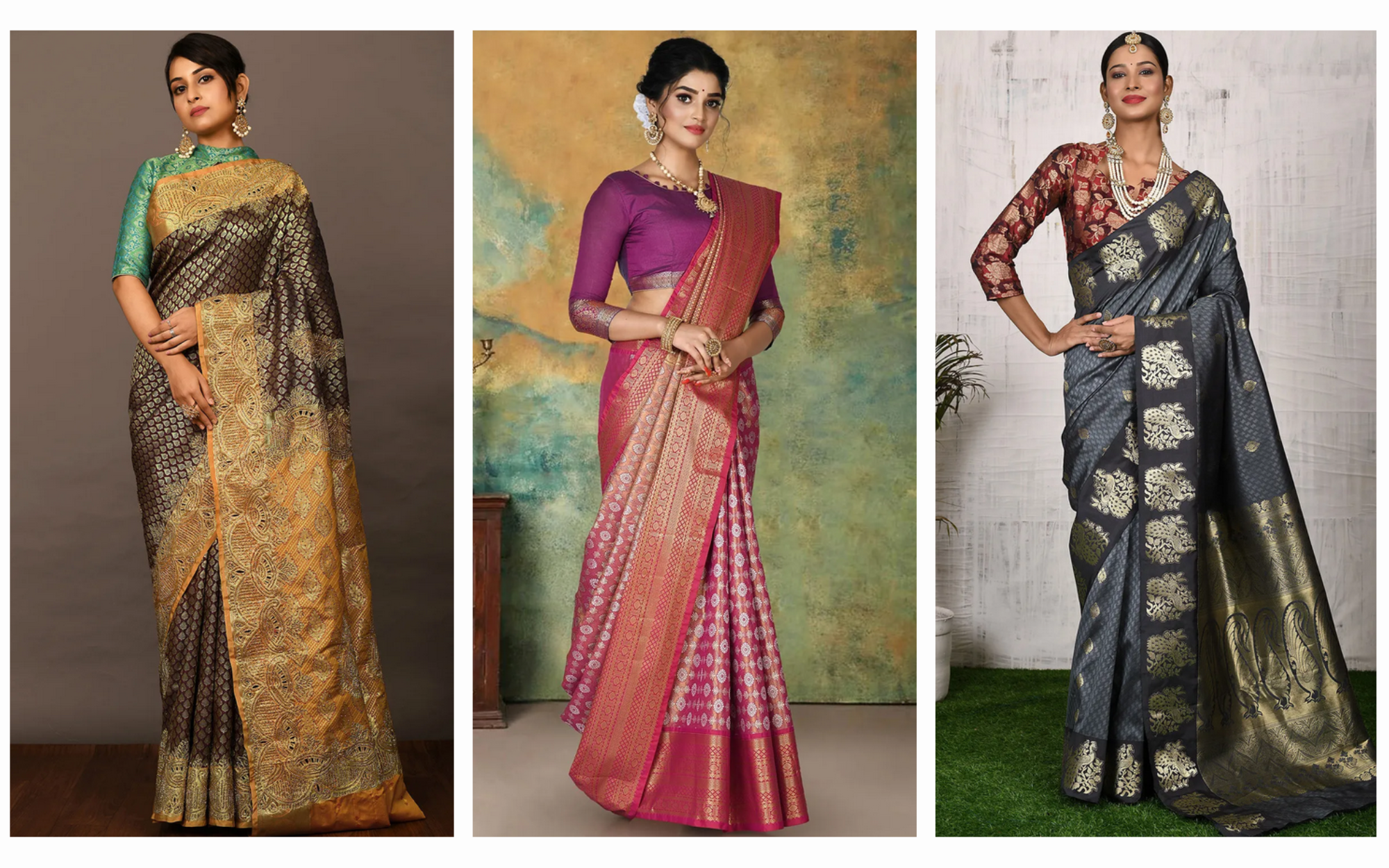
One of the best-known types of sarees is the Konrad. Due to its historical wealth and use of top-notch fabrics, Tamil Nadu, where these are from, has gained a great reputation. Various designs are used to decorate the borders of these sarees. Initial wearers of these sarees were temple deities. The Konrad saree’s unique wide border, which features exclusive designs of motifs of animals and natural elements with a royal touch, is its main selling point.
Chanderi Pattu Sarees
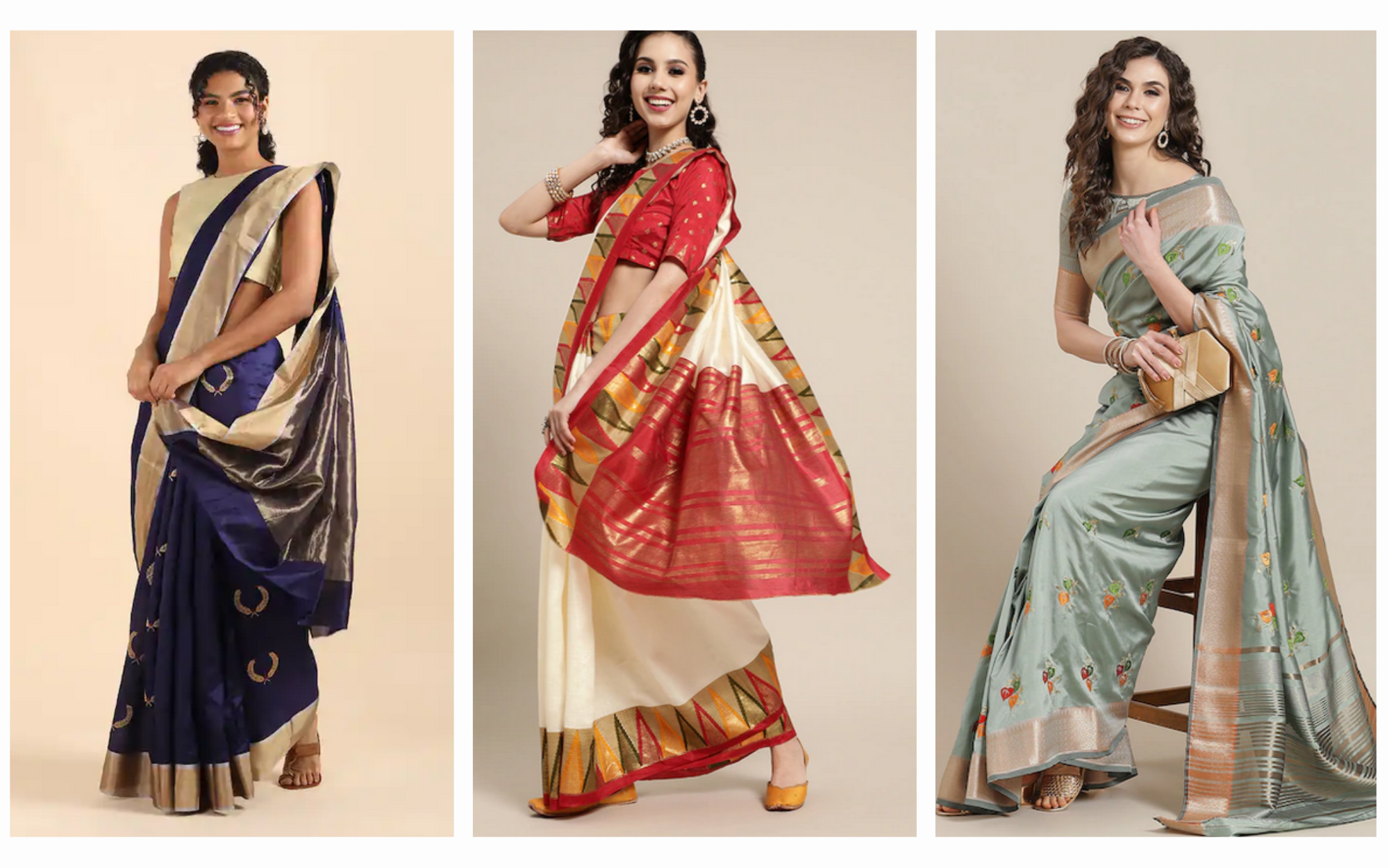
The lightweight, rich fabric in Chanderi sarees is handwoven using a centuries-old weaving method that combines cotton yarn, silk, and zari. This lovely silk saree comes from an area of Madhya Pradesh. The zari used for the border and motifs determines how much a pure chanderi silk saree costs. The price of the saree increases with the amount of zari it has.
Paithani Pattu Sarees

Marathi weddings are dominated by brides wearing Paithani silk sarees. More than two thousand years ago, this magnificent saree was created. The Mughal, Nizam, and Maratha eras’ female clothing included it as a crucial component. The Paithani is entirely handmade and has motifs that appear inlaid in the fabric because it is hand woven with accuracy. It also goes by the name “kathpadar saree.”
Bandhani Pattu Sarees
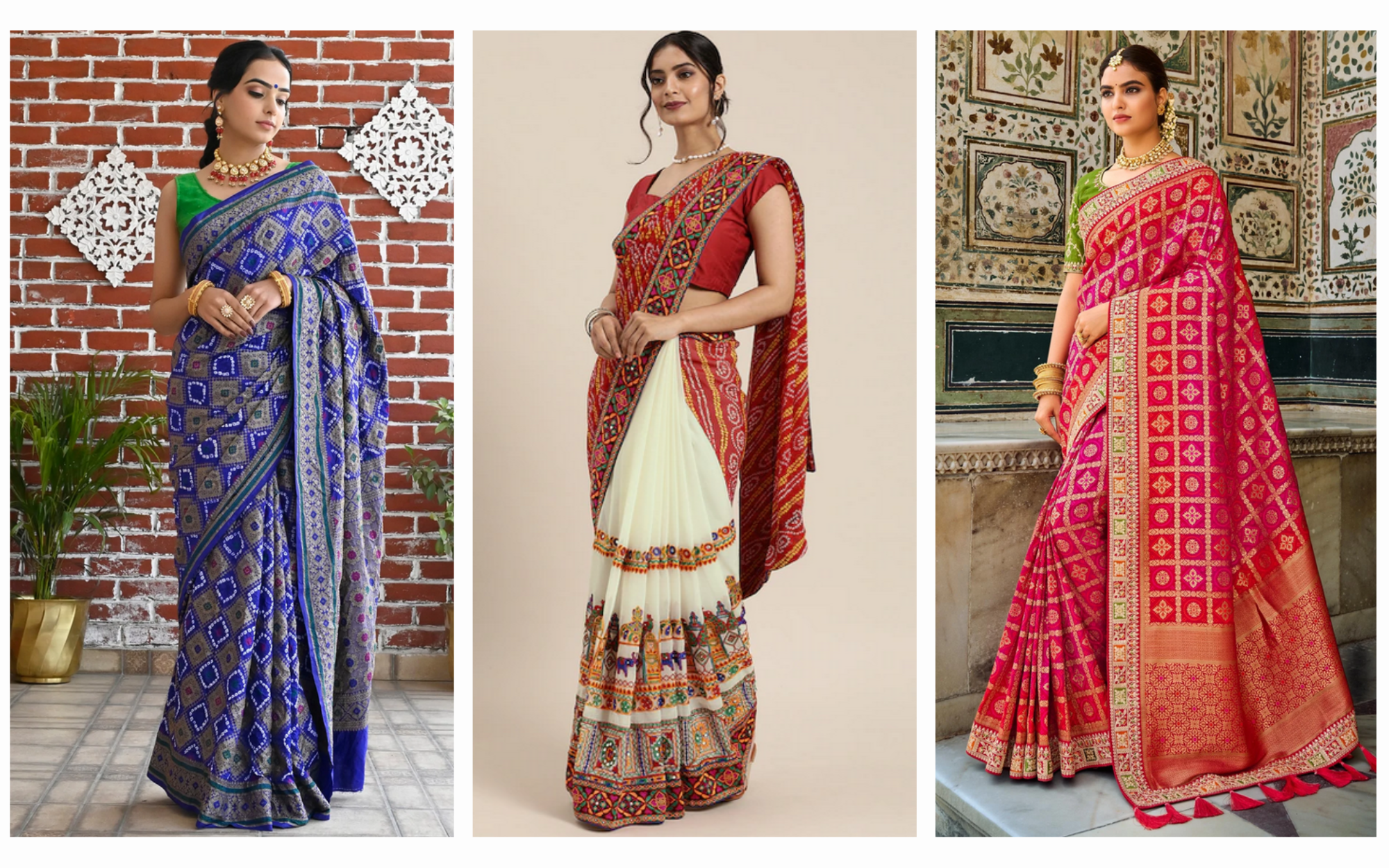
Gujarat is where bandhani sarees first appeared around 5000 years ago. The traditional tie-dye fabric process spread over time in western India and is now widespread in both Gujarat and Rajasthan. The butis are evenly spaced throughout the saree and are made from pure zari. Although the borders are frequently plain, they occasionally feature mango motifs. The saree is completed with an elegant pallu of brocade.
Sambalpuri Pattu Sarees
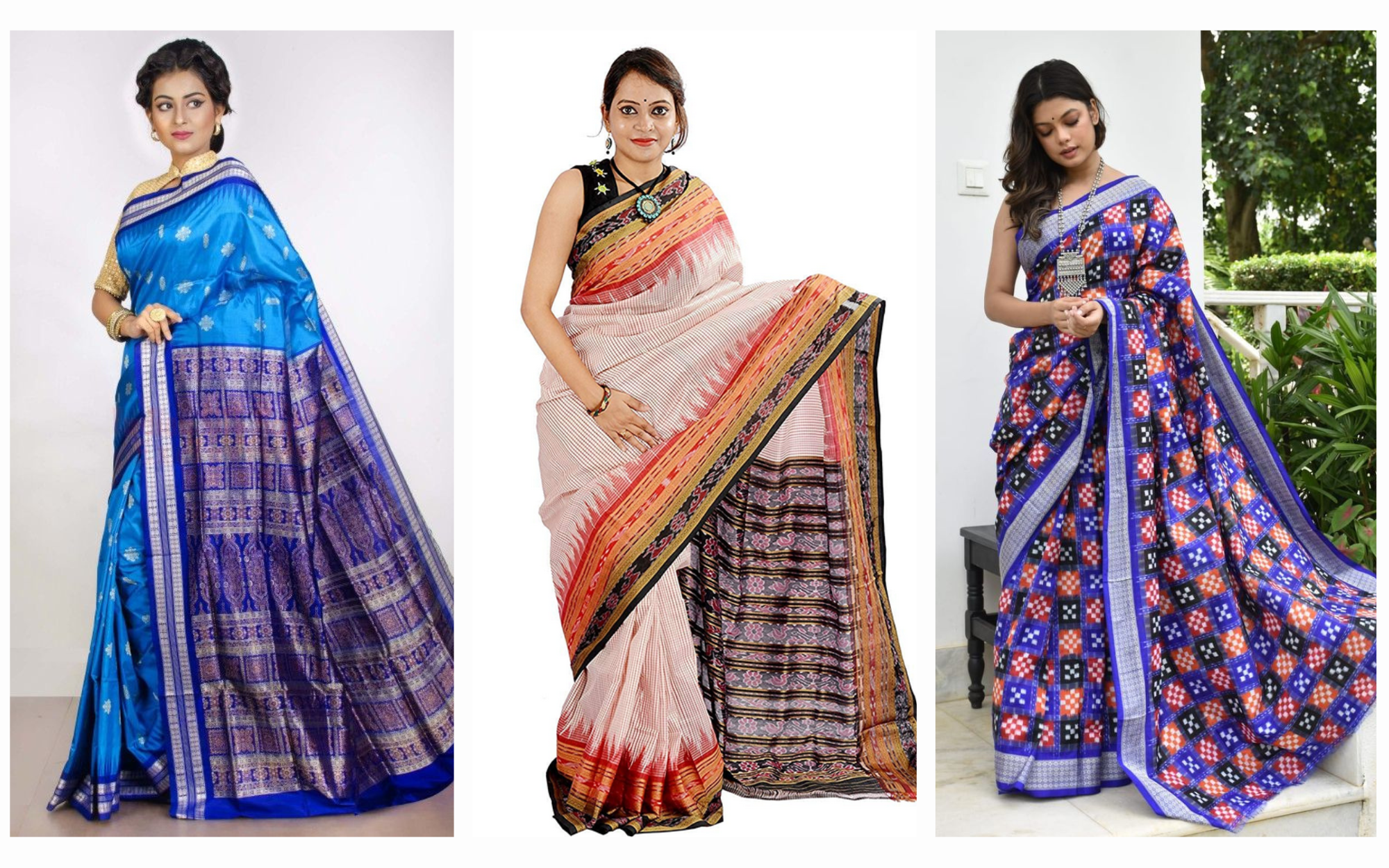
An Odisha-made handloom saree known for its distinctive character, eye-catching design, and the statement-making pattern is the Sambalpuri Silk Saree. Additionally, it reflects the original design approach of regional art and craft, where the artist creates designs influenced by natural flora and fauna or different geometrical patterns.
Art Pattu Sarees

A saree made of art silk is made of synthetic silk. It is known as silk because it is a synthetic fibre similar to silk. Just like their natural counterparts, synthetic sarees are lightweight and comfortable. They possess equivalent elegance. As a result, you can wear them throughout the summer without experiencing any problems. In truth, they fit the season perfectly.
Thanchoi Pattu Sarees
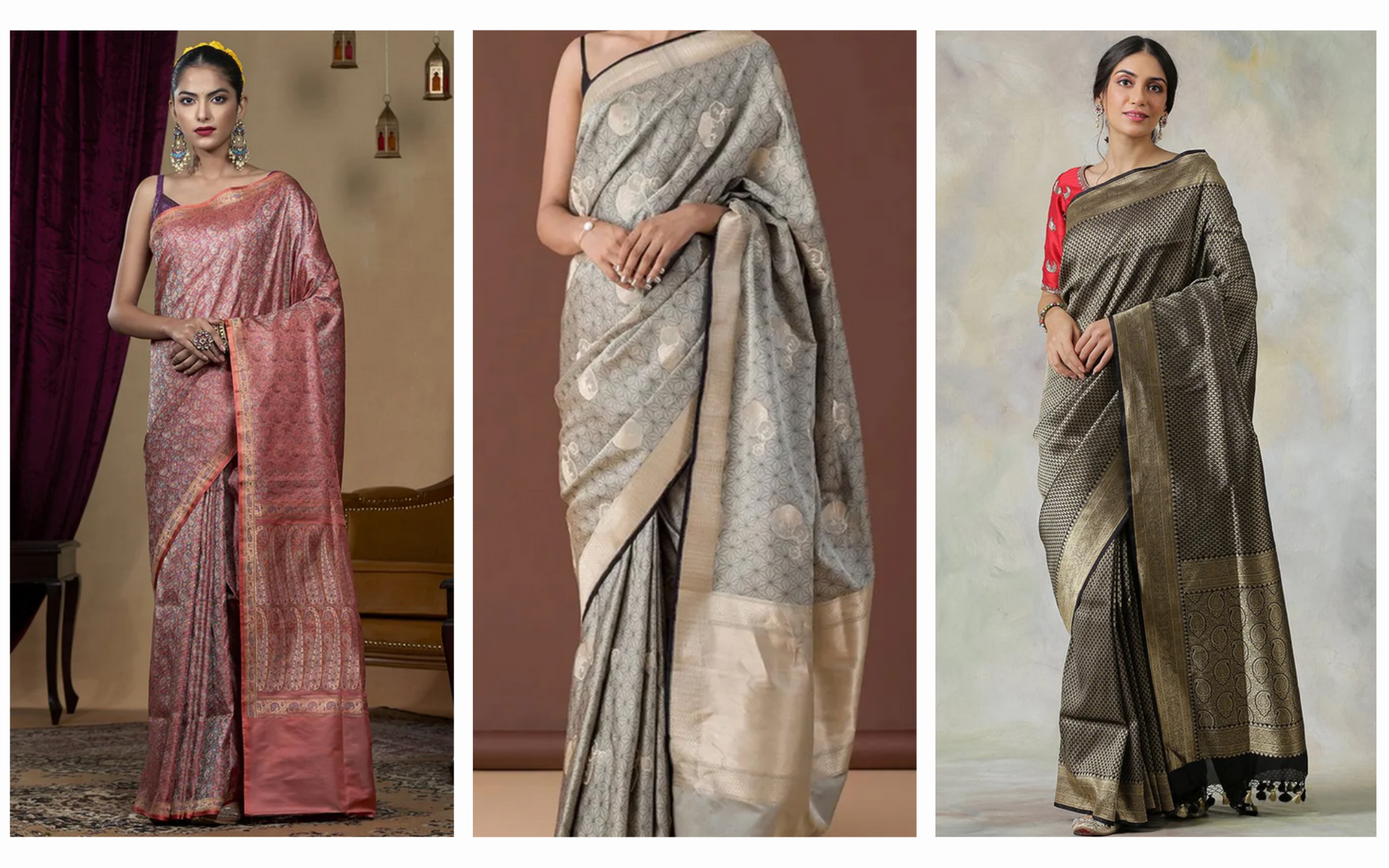
The floral motifs on ThanChoi silk sarees are unique. These are produced by weaving silk in a way that gives the finished item a brocade appearance. In many regions of India, Thanchoi sarees are very popular.
Raw Pattu Sarees
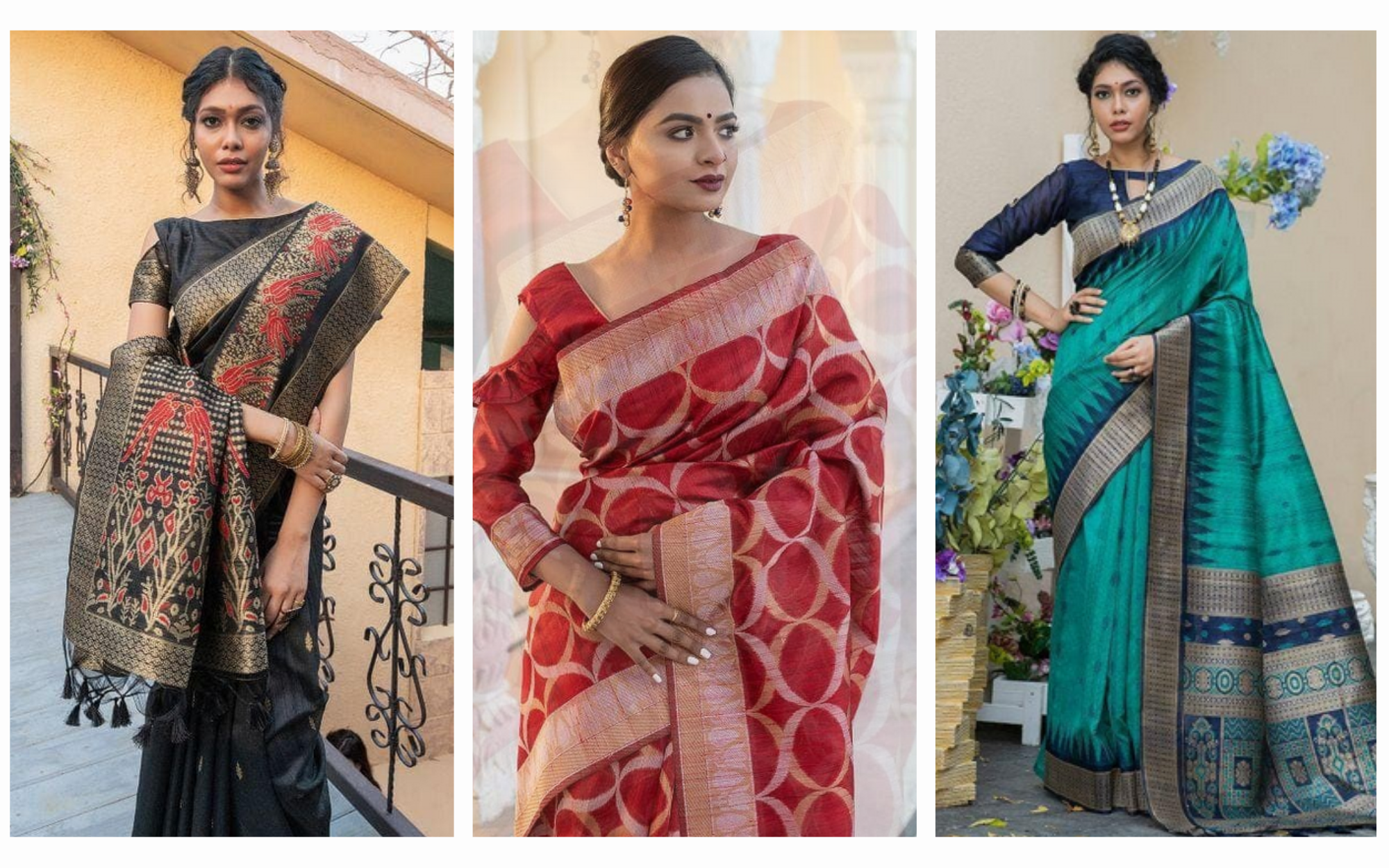
Raw silk sarees are crafted precisely with attention to every detail. They are available in a variety of hues and patterns in traditional and modern designs. This silk saree has contrasting borders that are less traditional and more modern. The natural elegance of raw silk sarees worn for centuries, and continues to be admired.
Cotton Pattu Sarees
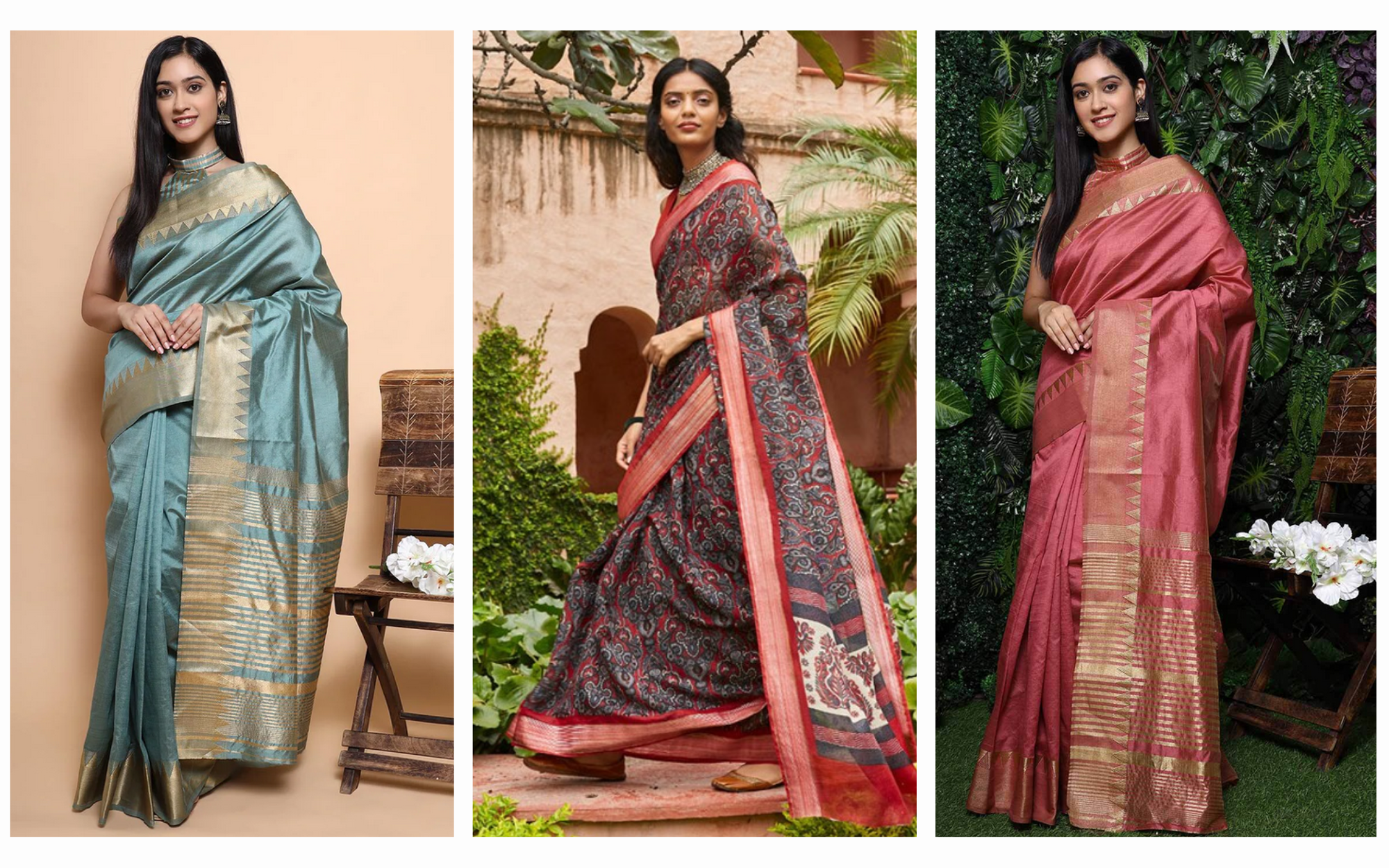
Pure silk and cotton are woven together to create the blissful sicosaree. In Tamilnadu, these are referred to as silk cotton sarees. Women in Telegana have adapted this saree slightly and call it the Sico-Gowdasaree. Sicosarees are light and easy to wear. It is a cotton and silk blend saree as its drapery is attractive and elegant thanks to the sculpted pleats.
Muga Pattu Sarees

Muga Silk Sarees are now considered a national fashion statement by many. They were first made in Assam. The Muga silk is superior to the other silk sarees made in India because of its glossy, fine texture and golden sheen. The pallu or drape of the Muga silk sarees has more design emphasis than the saree’s body.
Paat Pattu Saree

Paat silk is a domestic mulberry silk variety made in Assam. It is also known as Nuni Paat because the larvae feed on white mulberry plant leaves or Nuni in the local dialect. The silk has a natural white or off-white hue and is adored for its lightness, toughness, and glossy finish. Paat silk sarees combine traditional ethnic clothing with colourful and lavish designs to create modern garments that are incredibly stylish and beautiful to wear.
Banglori Pattu Sarees
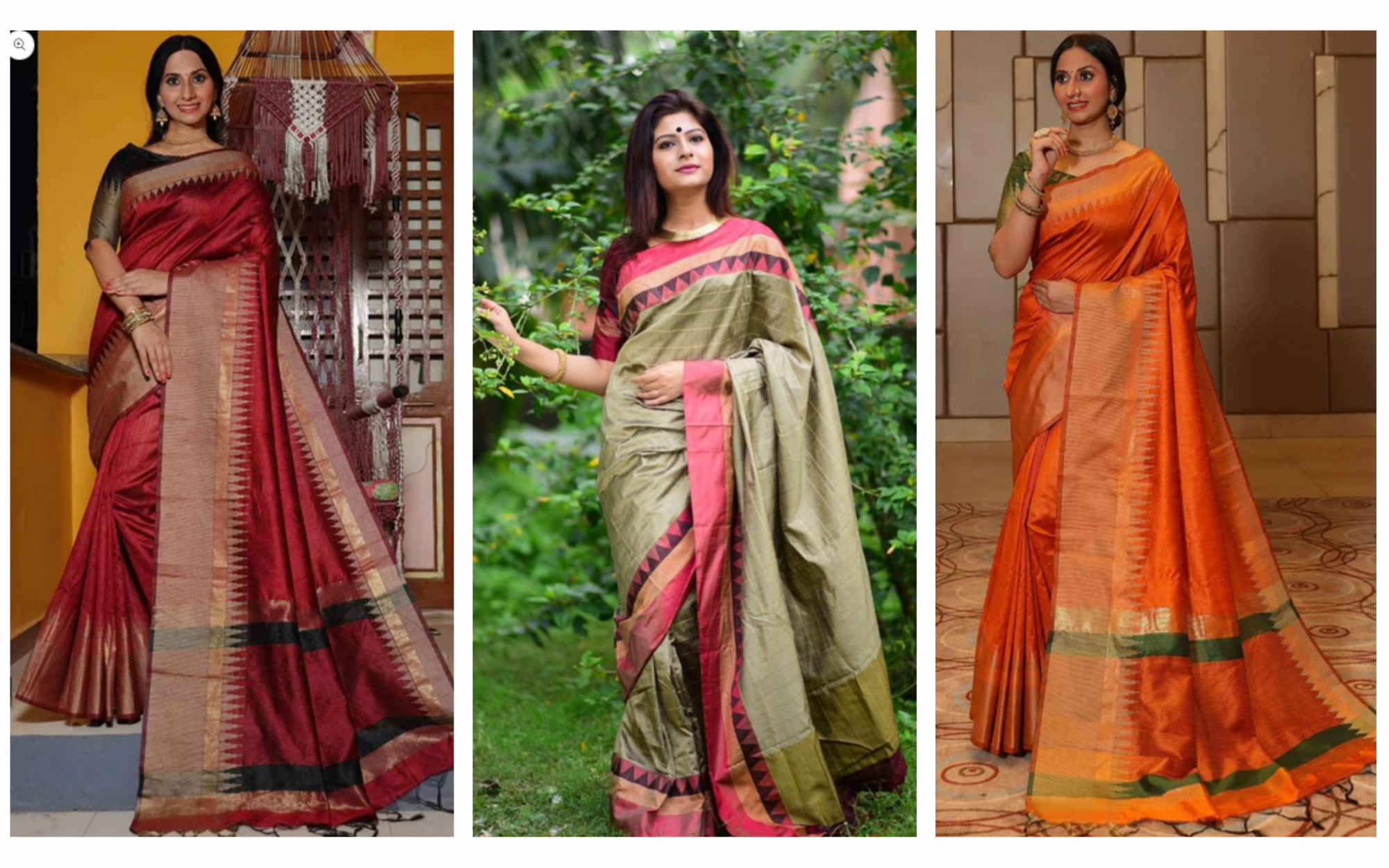
Banglori silk is known for its simplicity, purity, and texture of silk, which is meticulously produced in Bangalore, Karnataka’s silk farms. These silk designer sarees are well-known for their luxurious and fashionable appearance. These silk sarees are a popular style, particularly among the young.
Dharmavaram Pattu Sarees
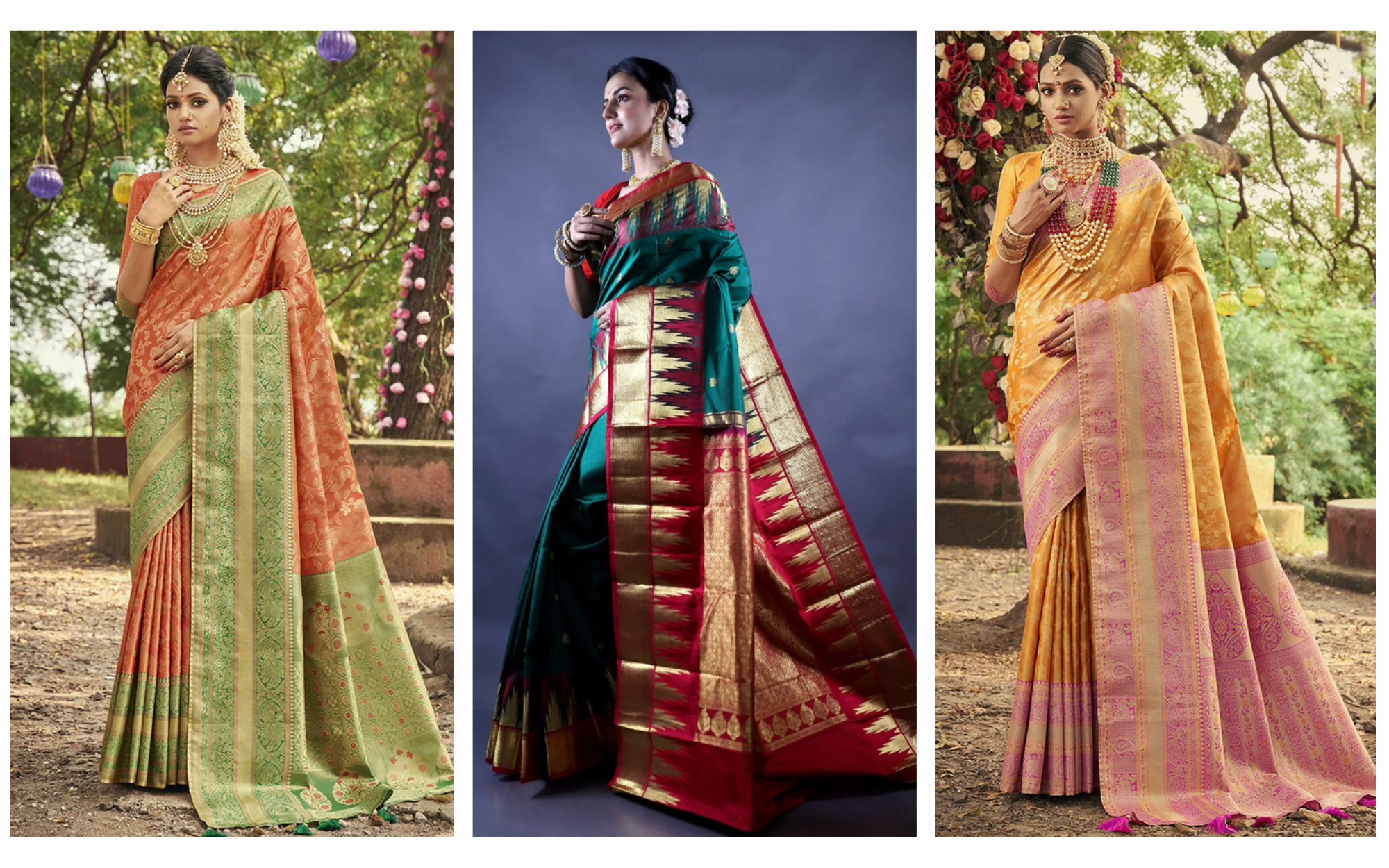
Dharmavaram sarees in Andhra Pradesh are handwoven using the interlocking weft technique. The design is a time-consuming method that must be riddled into a card before the weaving process can begin. Weaving a Dharmavaram saree is a time-consuming process that includes silk degumming for purification, dyeing, sizing, warping, and wefting. The thick texture of the saree makes it perfect to wear in the winter season.
Gadwal Pattu Sarees
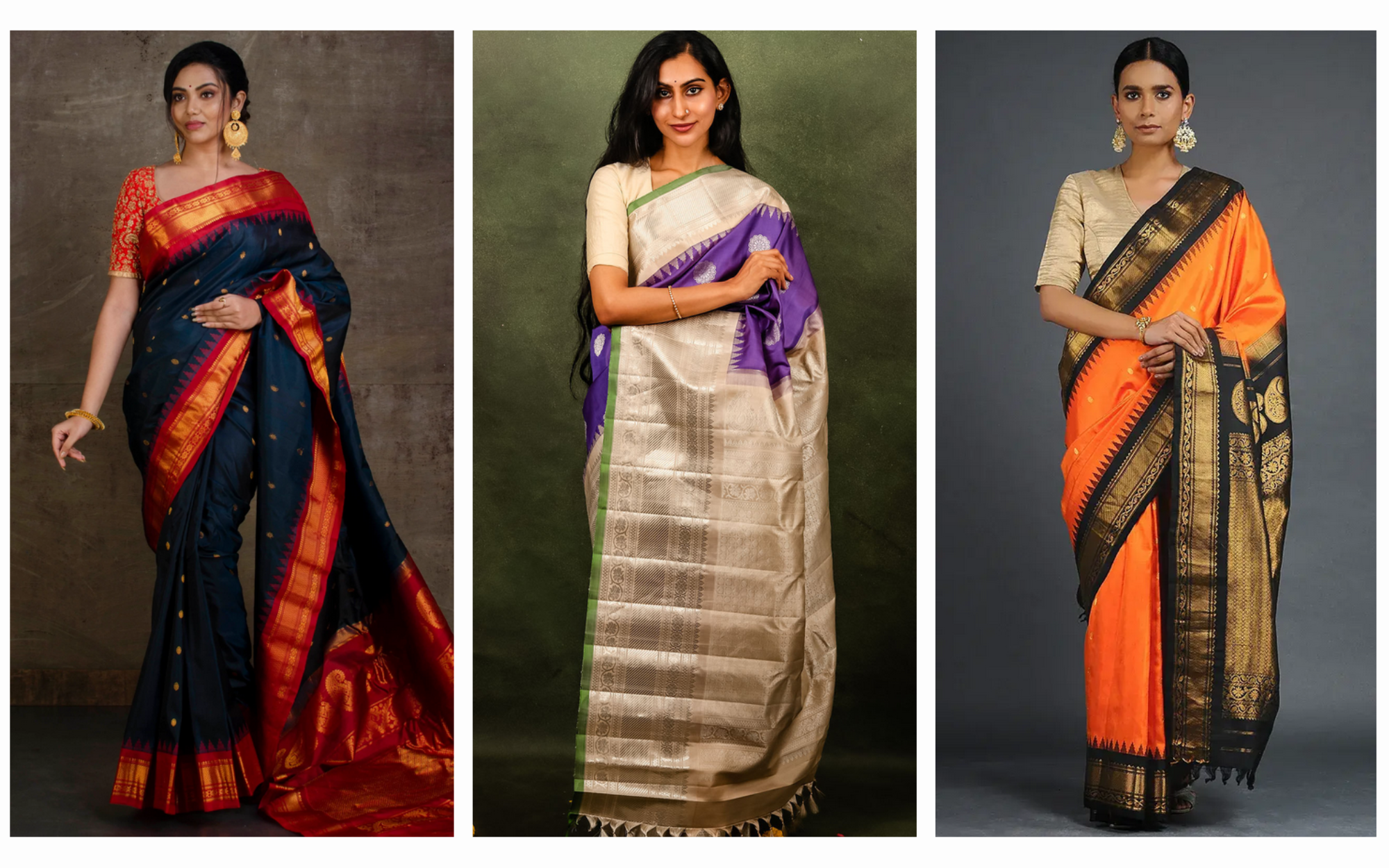
Gadwal sarees are made in Gadwal, Telangana. They are best known for the Zari on their sarees. Gadwal sarees are known for their lightweight zari patterns and well-crafted Kuttu borders and pallus. This saree has a fine cotton field that is weaved separately and then interlocked with pure silk borders and pallu.
Kota Pattu Sarees
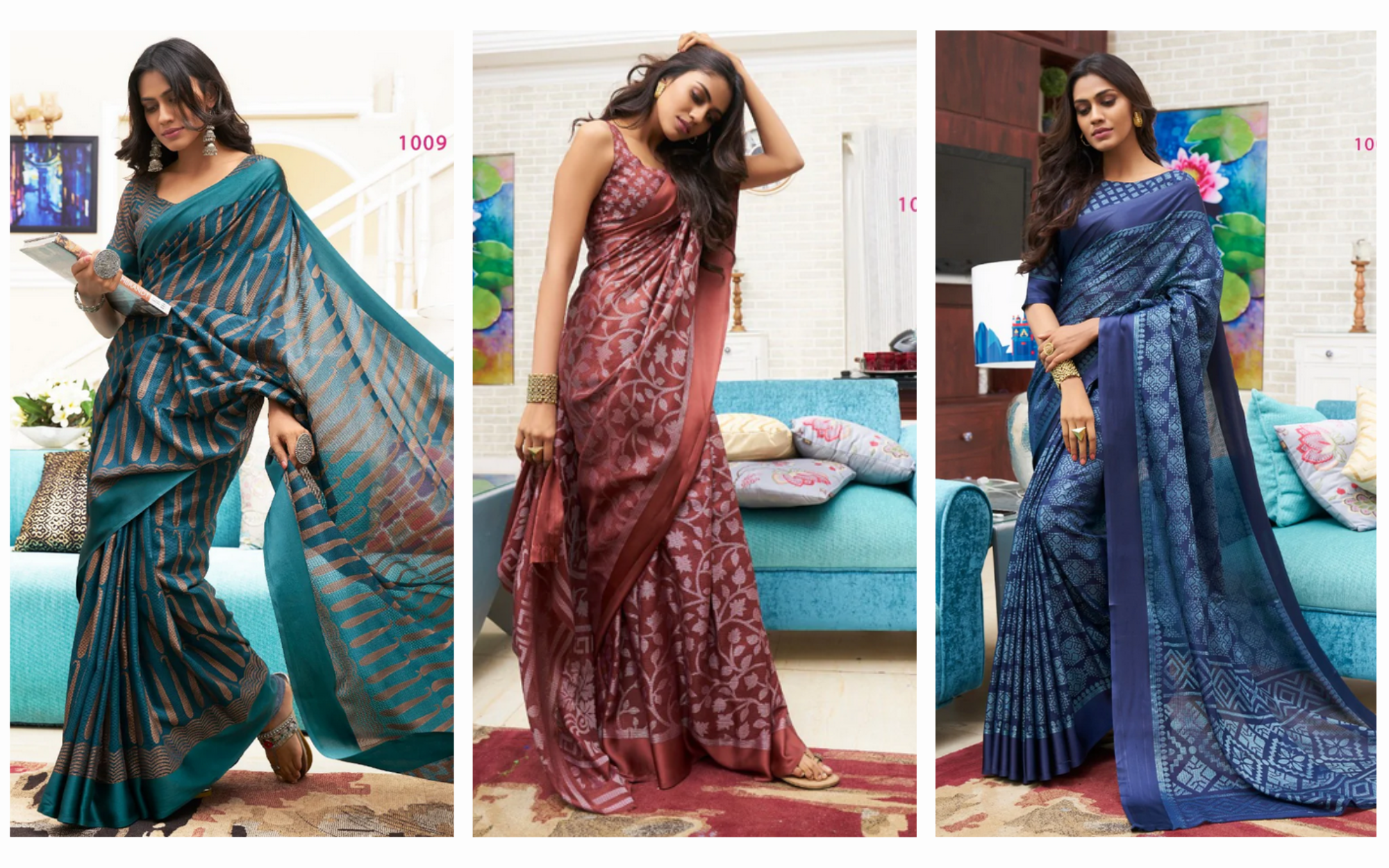
Kota Silk Sarees are made of cotton and silk in distinctive squares and have a fascinating matte and shiny finish. With high trims, a richly embroidered pallus, and artwork or prints, your sarees are sure to bring out the best in your new look. This distinctive Rajasthani weaving originated in Mysore.
Korial Pattu Sarees
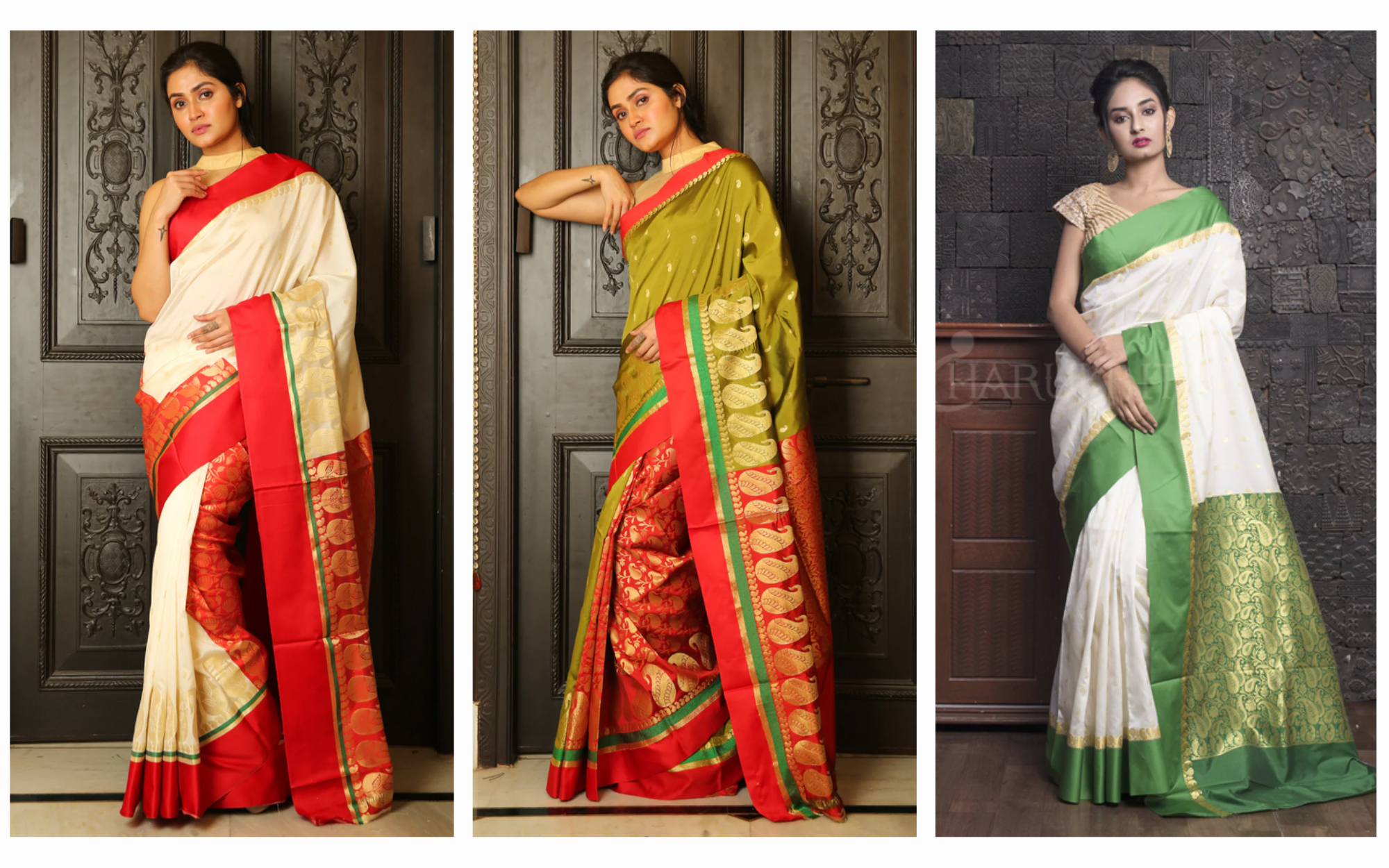
Korial is derived from the word ‘kora,’ which means plain or blank. Garad-Korial sarees are beautiful variations of the classic garad saree. The saree’s white/off-white silk base is plusher, and the coloured border and pallav are more ornamental, with intricate and elaborate motifs.
Narayan Peth Pattu Sarees
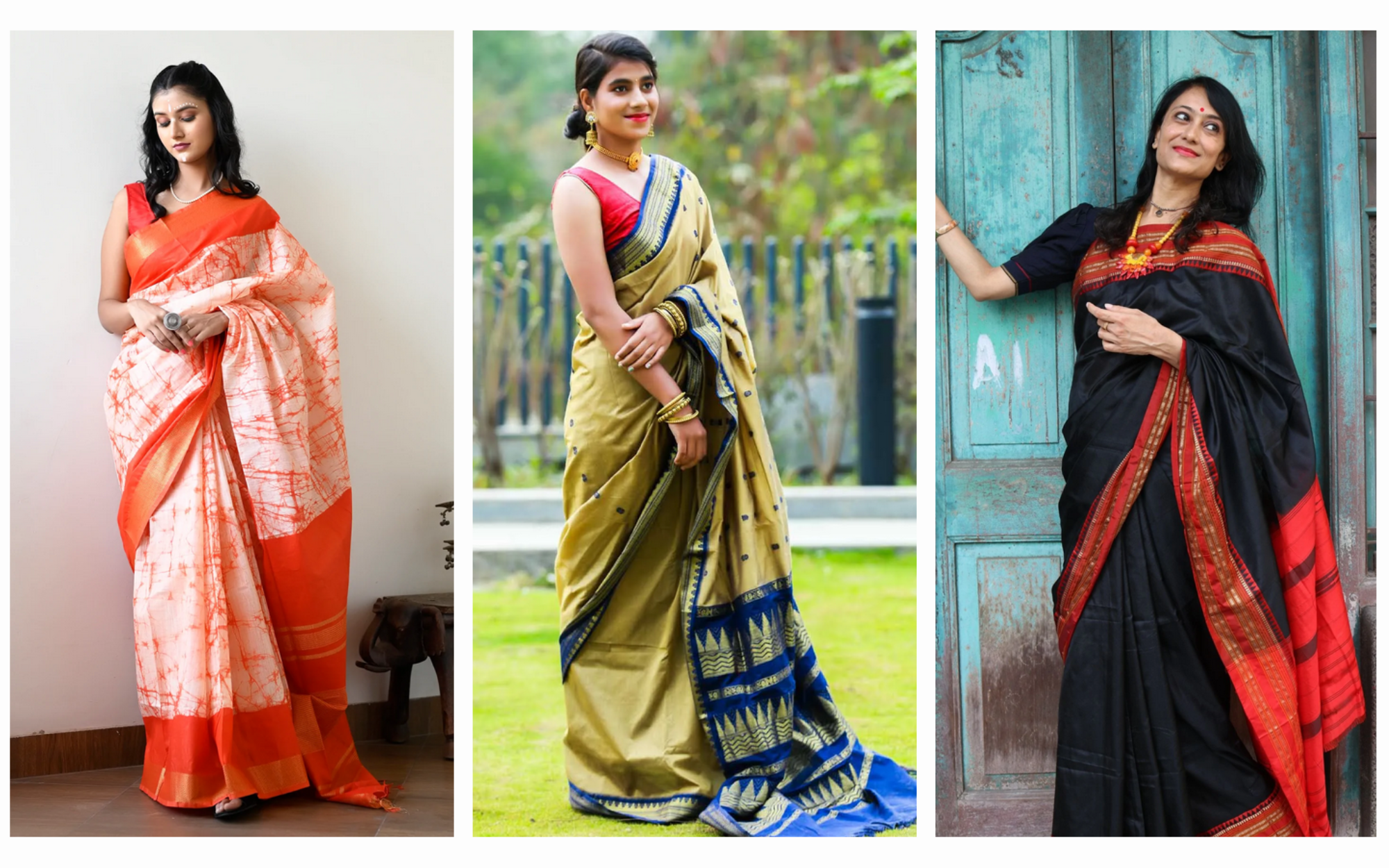
Narayan Peth sarees are made of cotton or a blend of cotton and silk. Their pallu and borders are very traditional. These sarees are simple and elegant. Narayan Peth saris have always been well-known and popular among saree buyers due to their high-quality weaving and distinctive checked designs. They are available in contrasting colours, with unique pallus and simple borders.
Patola Pattu Sarees

The exquisite silken weave of the Patola textile is not only an art form but also a heritage. Sometimes it is referred to as the “Queen of Silks.” Royals and aristocrats wore it on auspicious occasions. The Patola silk saree has no reverse side because both sides have equal colour and design intensities. These silk sarees are also known for their vibrant colour combinations for the last centuries.
Pochampally Pattu Sarees
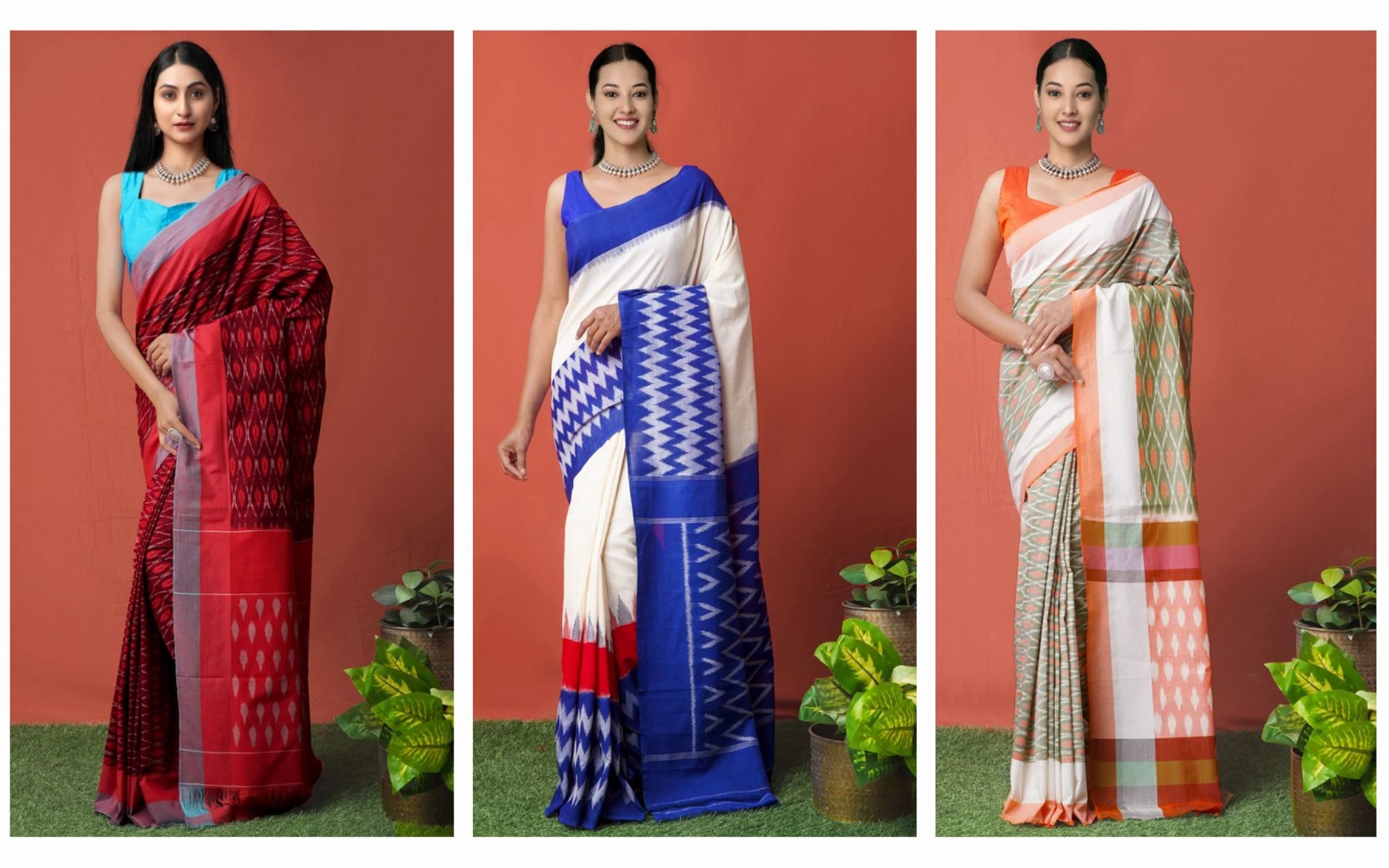
Pochampally, a weaving village in Telangana, India, is famous for its silk sarees with traditional geometric patterns woven in the Ikkat style. One of the distinctive features of the Pochampally Ikkat weaving process is the use of vibrant colours. These sarees are lightweight and easy to carry. Rich patterns and colour combinations make them a favoured choice for parties, religious festivals, and family events.
Sournachuri Pattu Sarees

The Swarnachari Silk saree has gold thread incorporated into the weave, which gives it its characteristic rich sheen. The intricate patterns and figurines created on the Sournachuri silk saree tell an entire mythological story. Apart from being woven in bright colours, the classic colours are off-white and deep red with a strong hint of gold.
Tanchoi Pattu Sarees
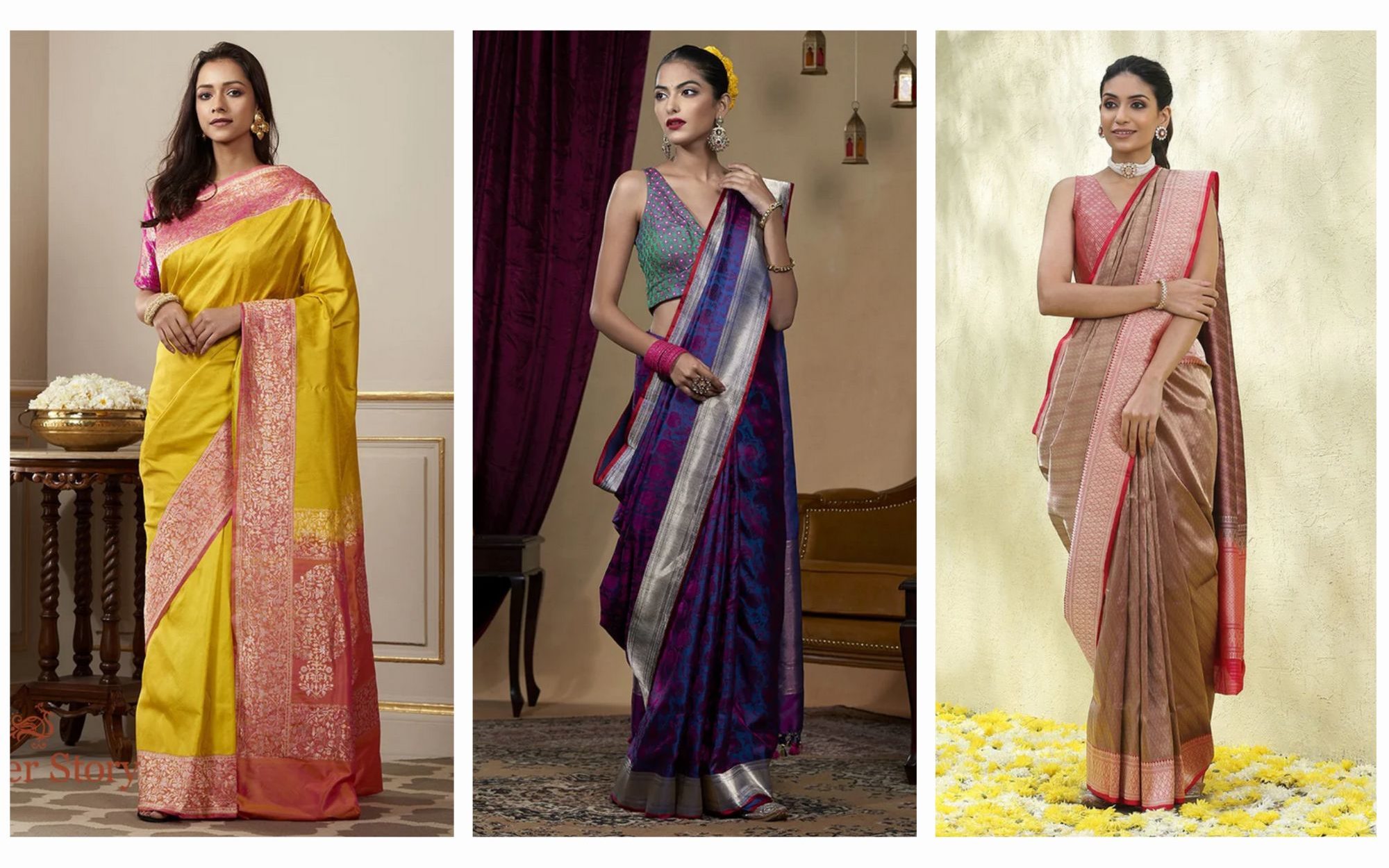
Tanchoi is a weaving technique that uses a single or double warp and two to five colours on the weft, which are frequently of the same shade. Another specific feature of the Tanchoi sarees is the Satin finish on the fabric texture background. It is a complex and technical weaving technique that employs one or two warp colours and two to five weft colours. These sarees are extremely light and easy to wear.
Uppada Pattu Sarees

Uppada sarees are silk sarees from the same-named beach town in Andhra Pradesh. They are woven in the Uppada Jamdani technique, which was introduced to the beach town in the 18th century and adopted a local look. Uppada sarees, typically made of cotton yarn, are embedded with pure zari, resulting in a sheen that is ideal for those who prefer to dress regally in ethnic fashion. Two weavers work on a single handloom to create these sarees.
Dupion Pattu Saree
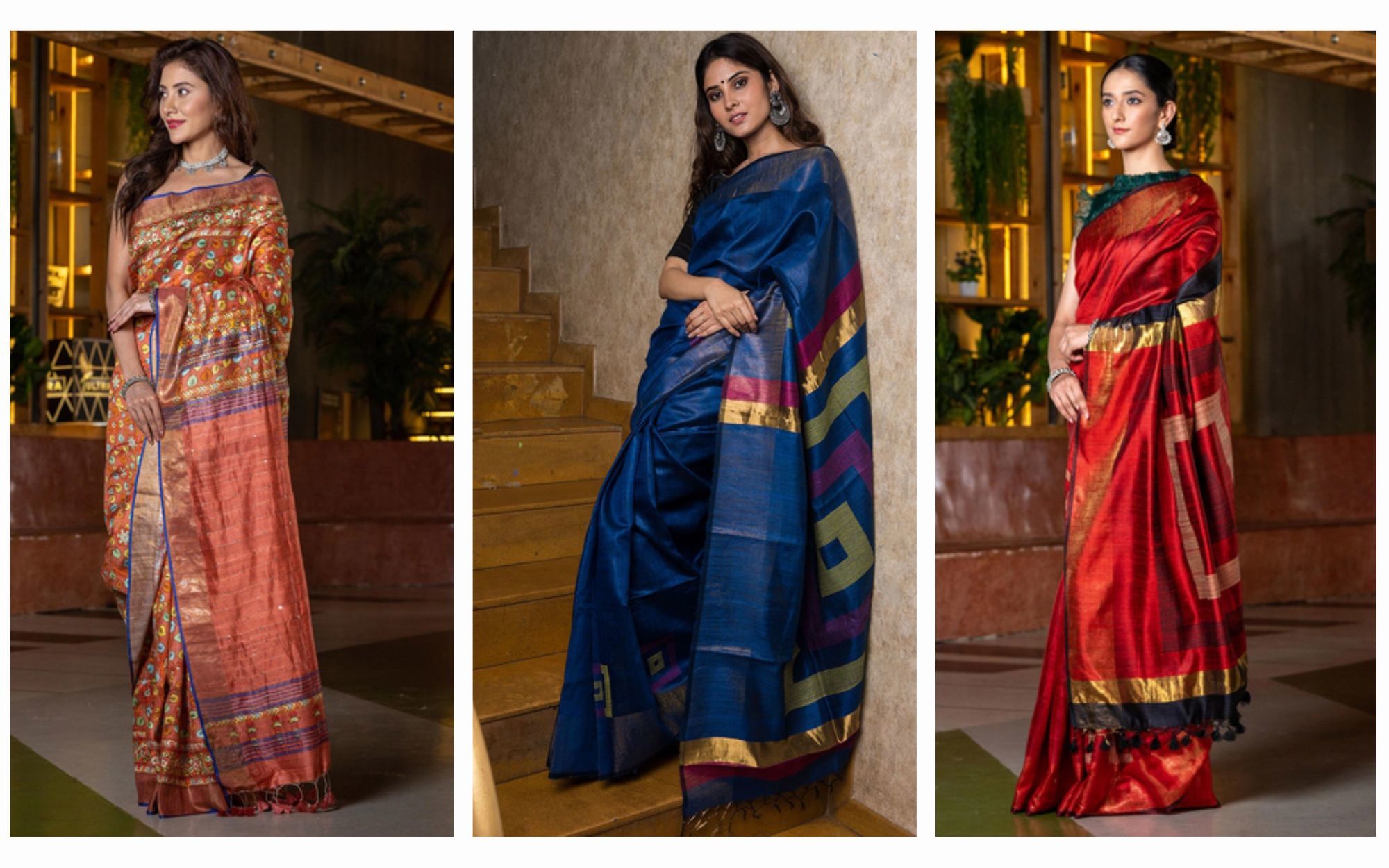
Mulberry silk and Dupion silk are used to make Dupion silk saris. Dupion silk sarees have very light designs with multiple colour patterns in the borders. These contrasting shades elevate the look of the saree and give it a spectacular side. Dupion silk is a crisp and heavy fabric woven by combining different shades of thread to highlight the design work in the borders.
Final talk
In India, silk sarees are worn for every special occasion. They are even treasured and passed down through generations. Silk sarees are offered to Goddesses and respected female relatives. Silk saree charms and weaving have evolved while preserving traditional methods. There is a diverse preference for silk sarees for every occasion, including weddings, parties, and traditional ceremonies.

